Our verdict
- Top pick in best hard court tennis shoes
- Top pick in best lightweight tennis shoes
Pros
- Light and nimble on the feet
- Mind-blowing durability for the price
- Well-balanced soft cushioning
- Wide and stable platform for a speed shoe
- Excellent grip and give
- Amazing in-shoe comfort
- Ideal for wide feet
Cons
- Lacks breathability
- Not for narrow feet
Audience verdict
- Top 24% most popular tennis shoes
Comparison
The most similar tennis shoes compared
+ + Add a shoe | |||||
|---|---|---|---|---|---|
| Audience score | 88 Great! | 78 Good! | 67 Bad! | 88 Great! | |
| Price | £110 | £65 | £90 | £100 | |
| Shoe type | All Court | All CourtHard Court | All Court | All Court | |
| Shock absorption | Moderate | Low | - | Low | |
| Energy return | Moderate | Moderate | - | Moderate | |
| Traction | Moderate | High | - | Moderate | |
| Construction | Speed | Stability | Stability | Speed | |
| Breathability | Moderate | Breathable | Warm | Moderate | |
| Weight lab | 12.3 oz / 349g | 11.3 oz / 319g | 12.2 oz / 346g | 12.6 oz / 357g | |
| Lightweight | ✓ | ✓ | ✓ | ✗ | |
| Drop lab | 9.8 mm | 10.2 mm | 7.5 mm | 9.4 mm | |
| Width / fit | Wide | Medium | Medium | Medium | |
| Toebox width | Medium | Medium | Medium | Wide | |
| Size | True to size | Slightly small | Half size small | True to size | |
| Midsole softness | Balanced | Balanced | Balanced | Balanced | |
| Stiffness | Stiff | Flexible | Stiff | Moderate | |
| Torsional rigidity | Moderate | Moderate | Moderate | Moderate | |
| Heel counter stiffness | Flexible | Flexible | Stiff | Moderate | |
| Midsole width - forefoot | Very wide | Narrow | Wide | Average | |
| Midsole width - heel | Average | Narrow | Average | Average | |
| Outsole durability | Decent | Decent | Bad | Decent | |
| Heel padding durability | Decent | Bad | Bad | Bad | |
| Heel stack lab | 29.2 mm | 28.6 mm | 28.4 mm | 28.9 mm | |
| Forefoot | 19.4 mm | 18.4 mm | 20.9 mm | 19.5 mm | |
| Insole thickness | Very thick | Average | Average | Thin | |
| Removable insole | ✓ | ✓ | ✓ | ✓ | |
| Heel tab | None | None | None | None | |
| Toebox durability | Good | Bad | Decent | Decent | |
| Outsole hardness | Very hard | Average | Average | Average | |
| Outsole thickness | Average | Average | Very thick | Average | |
| Ranking | #12 Top 31% | #33 Bottom 15% | #38 Bottom 2% | #13 Top 34% | |
| Popularity | #9 Top 24% | #14 Top 36% | #37 Bottom 5% | #18 Top 47% |
Who should buy
At its moderate price point, the K-Swiss Hypercourt Express 2 has a lot to offer to the players who:
- prioritise comfort in their tennis shoes (plush upper and pleasant cushioning)
- have wide feet and need a more spacious fit
- need both grip and give to move around the court

Who should NOT buy
Players with slenderer feet will most likely not find peace with the fit of the K-Swiss Hypercourt Express 2. Even in the medium width, it is quite roomy and there is not much one can do to tighten up the shoe. We recommend looking into the ASICS Solution Speed FF 2 or the Nike Vapour Pro for a more one-to-one fit.
We believe that you will also appreciate these two options if you happen to play in hot climates. Both proved to be better ventilated than the K-Swiss Hypercourt Express 2.

Cushioning
Shock absorption
The Hypercourt Express 2 comes with a good deal of cushioning and impact protection for a shoe in its weight category.
Featuring a soft full-length foam and a generously thick insole, the shock absorption of this K-Swiss shoe clocked in at 100 SA in the heel and 70 SA in the forefoot. Both measurements are slightly above the average of tennis shoes.
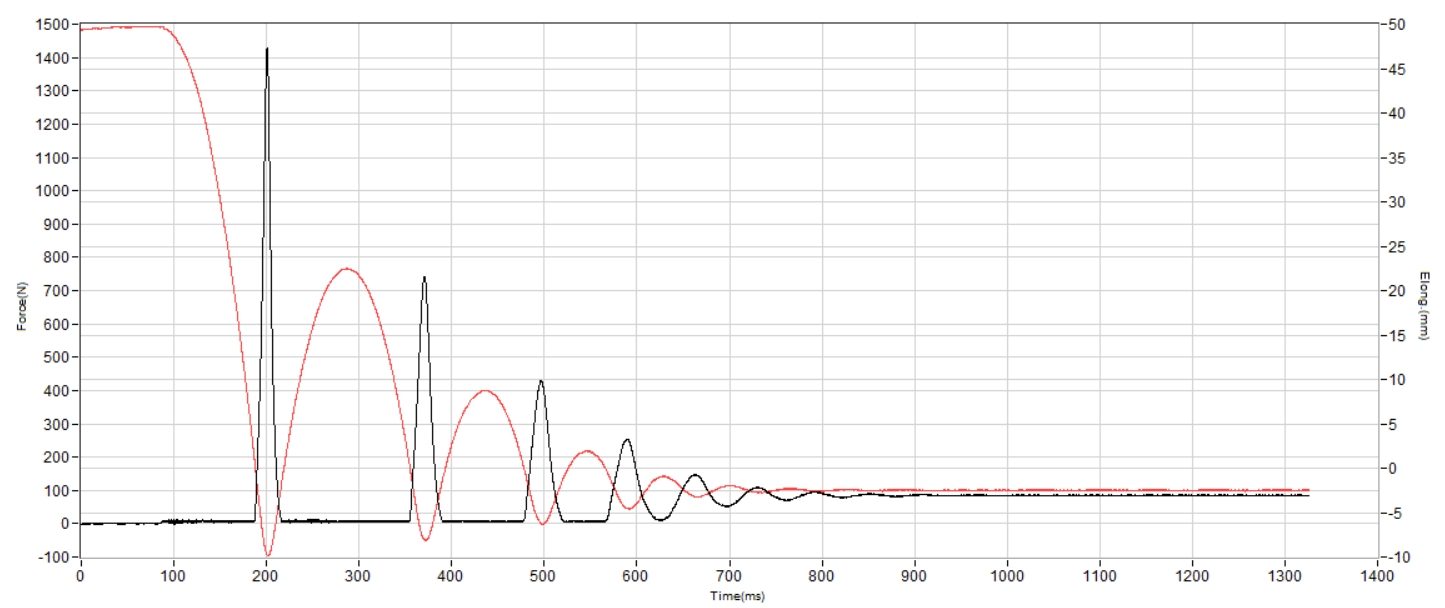
| Hypercourt Express 2 | 100 SA |
| Average | 99 SA |
Energy return
There is no explosiveness or pronounced bounce in this Hypercourt shoe, but you get a decently responsive and dynamic experience with a moderate energy return of 45.2% in the heel and 51.1% in the forefoot.
| Hypercourt Express 2 | 45.2% |
| Average | 48.8% |
Heel stack
We turned to our calliper to measure the shoe's stack in the heel and got 29.2 mm. That's an average amount of foam for a tennis shoe. And more than enough to take care of hard landings.
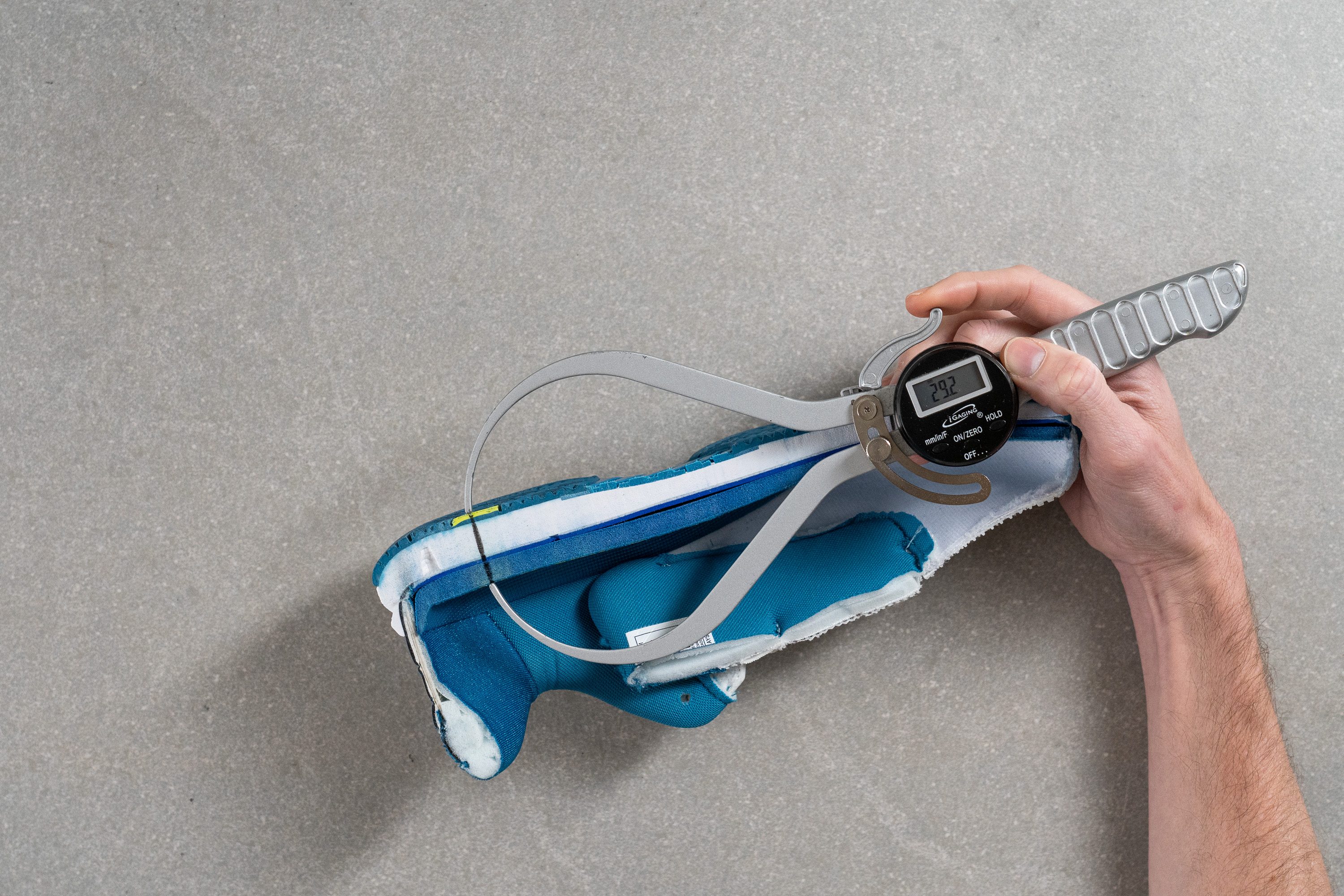
| Hypercourt Express 2 | 29.2 mm |
| Average | 29.2 mm |
Forefoot stack
Given how much this shoe wanted us to stay on our toes, it also provided adequate cushioning under the balls of our feet. Our calliper showed 19.4 mm of stack in the forefoot which is standard for tennis shoes.
On moves like split tests, we got enough of both impact protection and movement control for quick footwork.
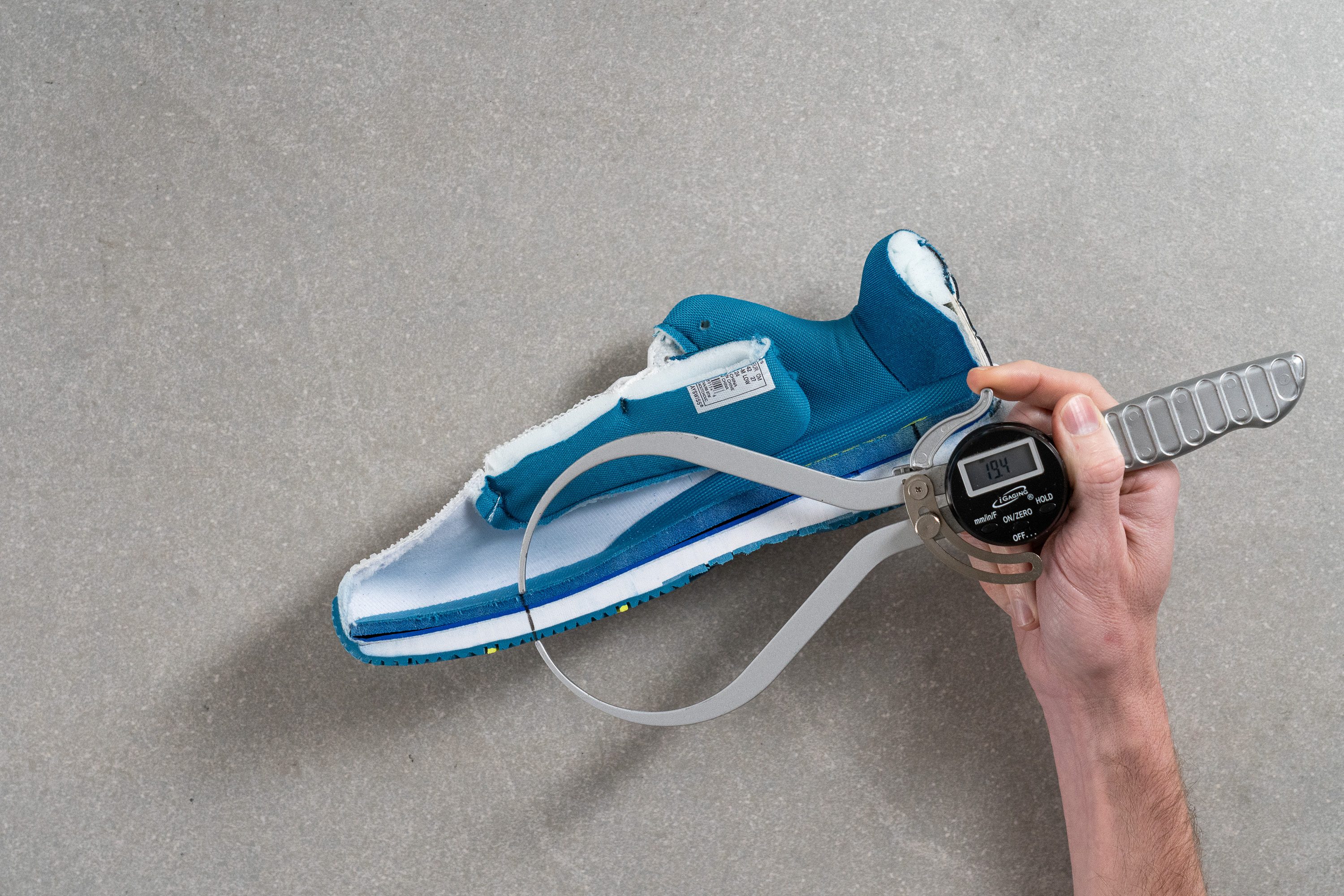
| Hypercourt Express 2 | 19.4 mm |
| Average | 19.5 mm |
Drop
We also enjoyed a fine balance of cushioning and court feel thanks to the moderate drop of the Hypercourt Express 2.
Based on our stack measurements, there is a 9.8 mm difference in height between the shoe's heel and forefoot. This is a sweet spot for those who want something in the middle.
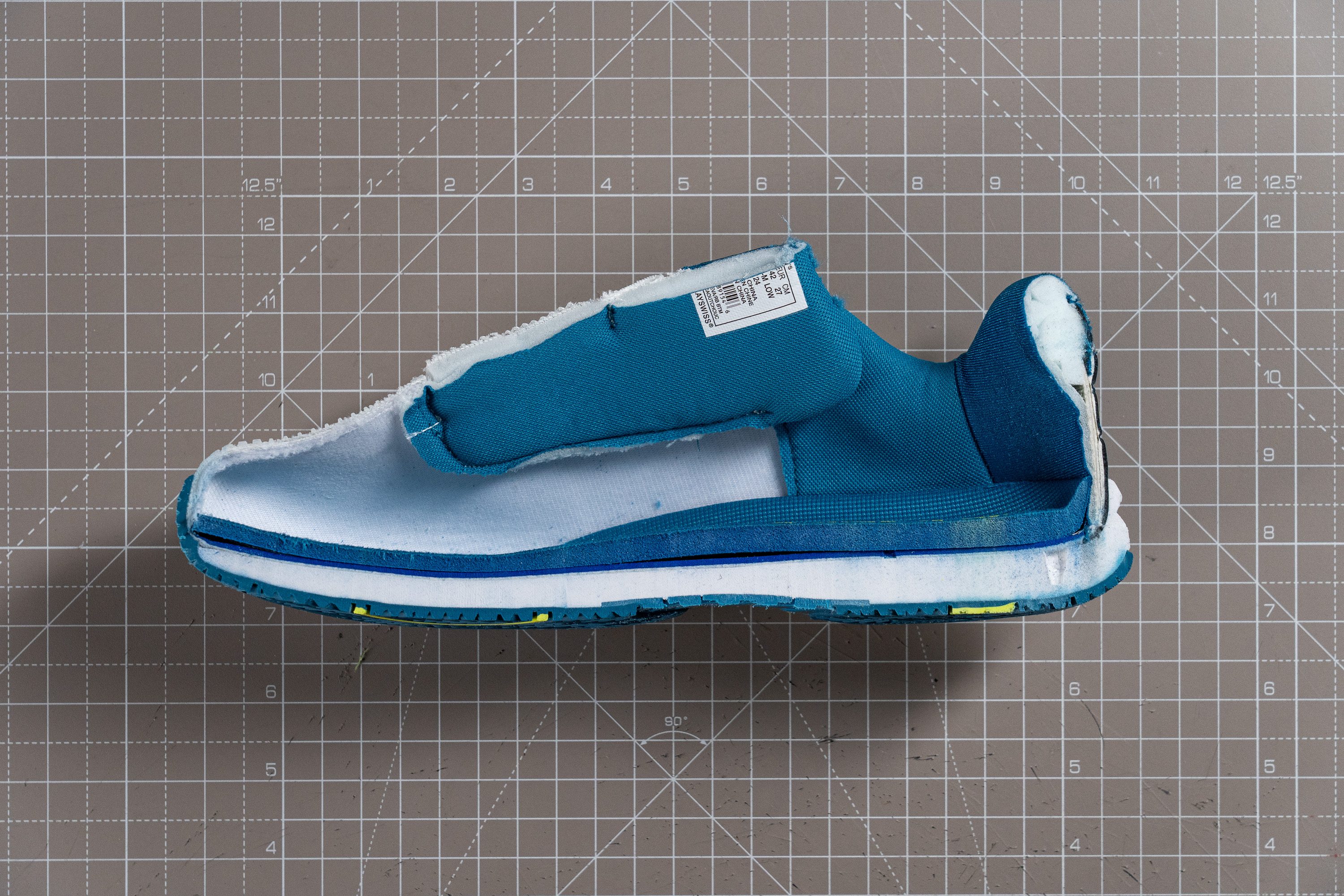
| Hypercourt Express 2 | 9.8 mm |
| Average | 9.7 mm |
Midsole softness
The K-Swiss Hypercourt Express 2 delivers a great deal of comfort with its fairly soft midsole foam. Using a durometer, we got a reading of 24.5 HA which is as much as 30% softer than average!
But let us reassure you that it is not a mushy experience at all! The plushness is encased by the hard rubber outsole and is stabilised by a stiff midfoot shank. As a result, we got a controllably bouncy ride that kept us nimble on our feet.
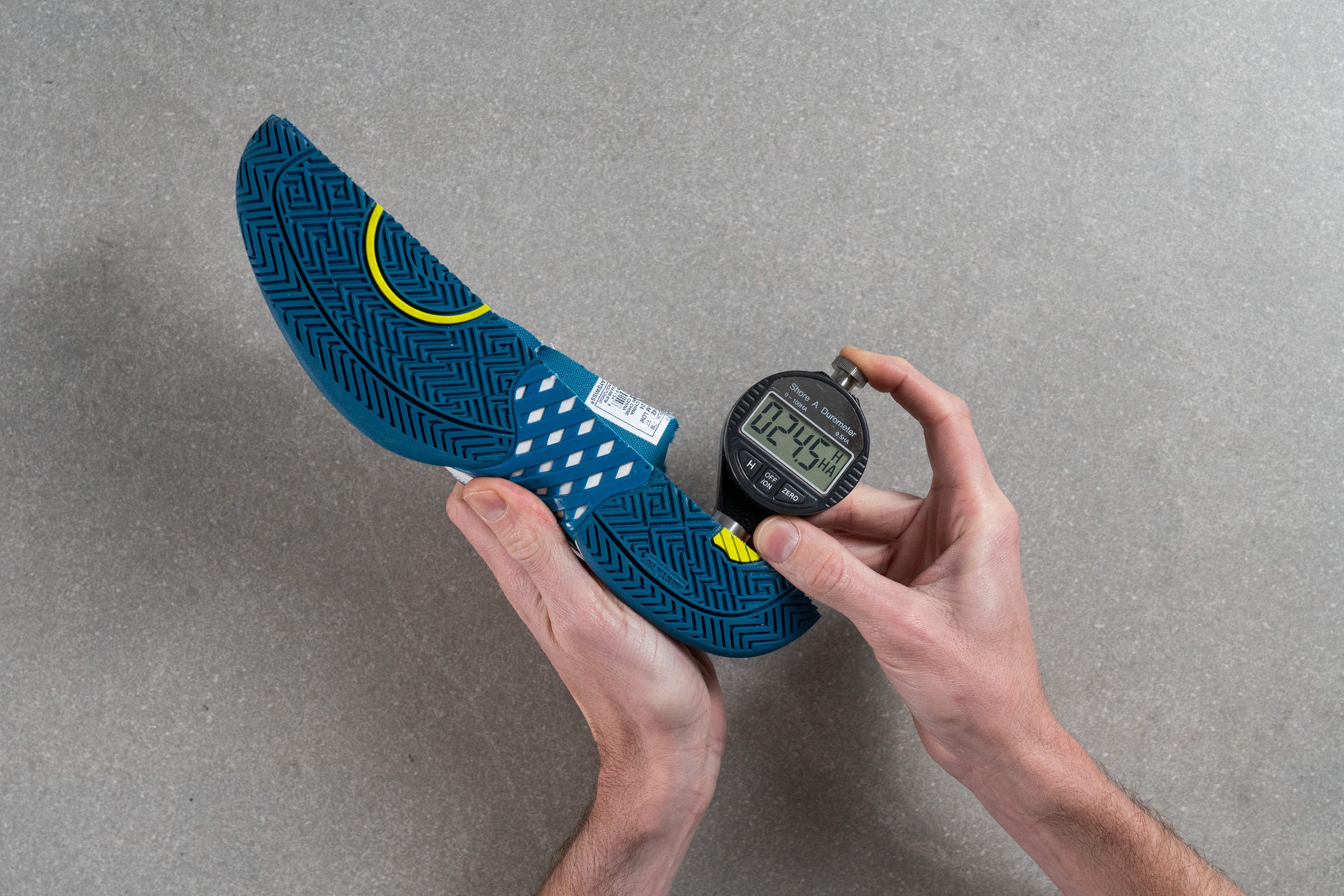
| Hypercourt Express 2 | 24.5 HA |
| Average | 28.1 HA |
Size and fit
Size
K-Swiss Hypercourt Express 2 fits true to size (40 votes).
Width / Fit
If you are someone who often struggles to get enough space in a tennis shoes, your pain ends here with the K-Swiss Hypercourt Express 2.
From the off, the shoe required absolutely no breaking in! It felt fabulously spacious on our medium-width feet. But this may not be good news for some players who rely on extra-cinched foot containment.
Keep in mind that in a standard width, the Hypercourt measures 96.0 mm in the widest part of the toebox. That's a few solid millimetres wider than average.
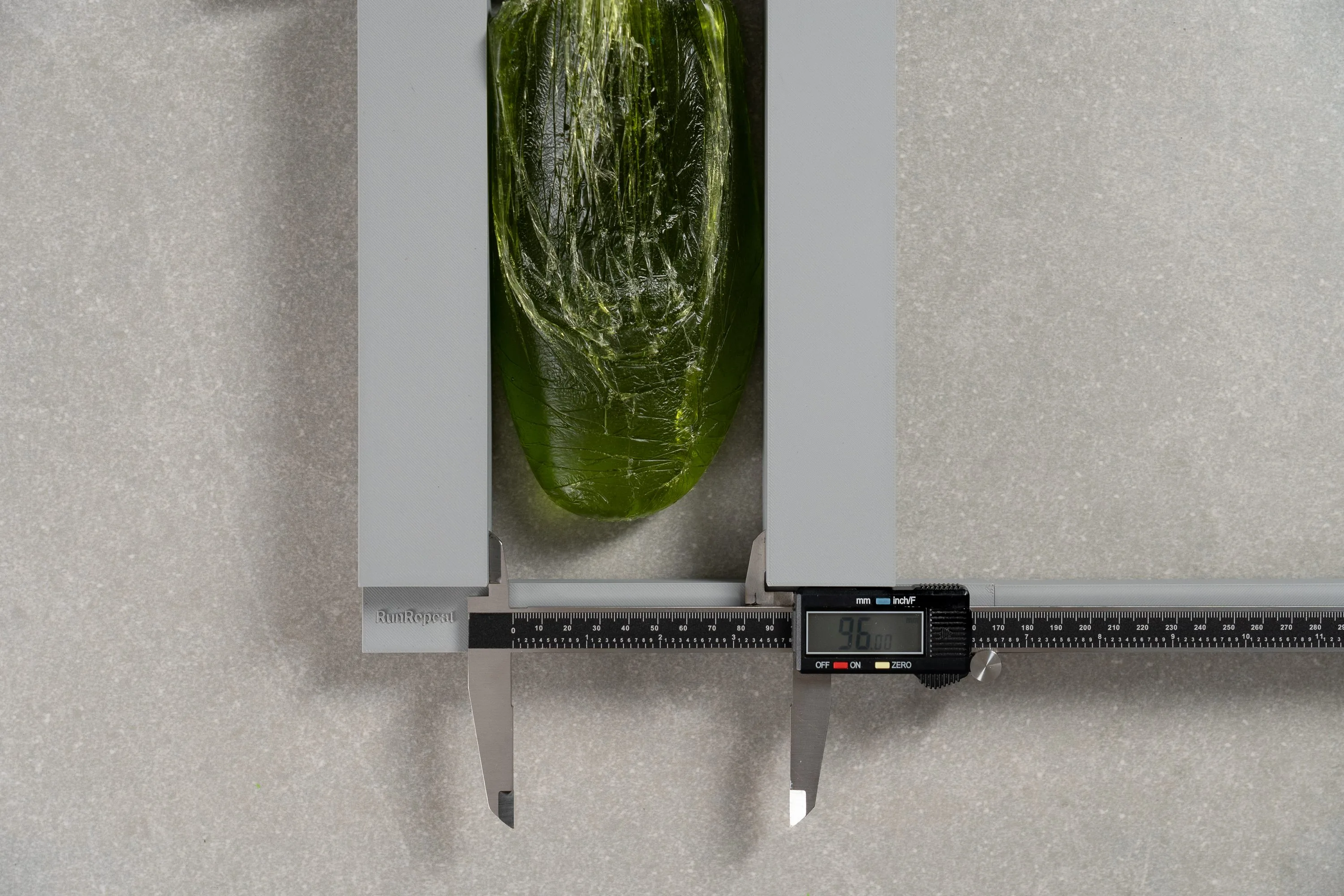
| Hypercourt Express 2 | 96.0 mm |
| Average | 92.9 mm |
Toebox width
There is also no significant tapering at the tip of the toebox. It remains nice and spacious at 71.3 mm at the big toe mark.
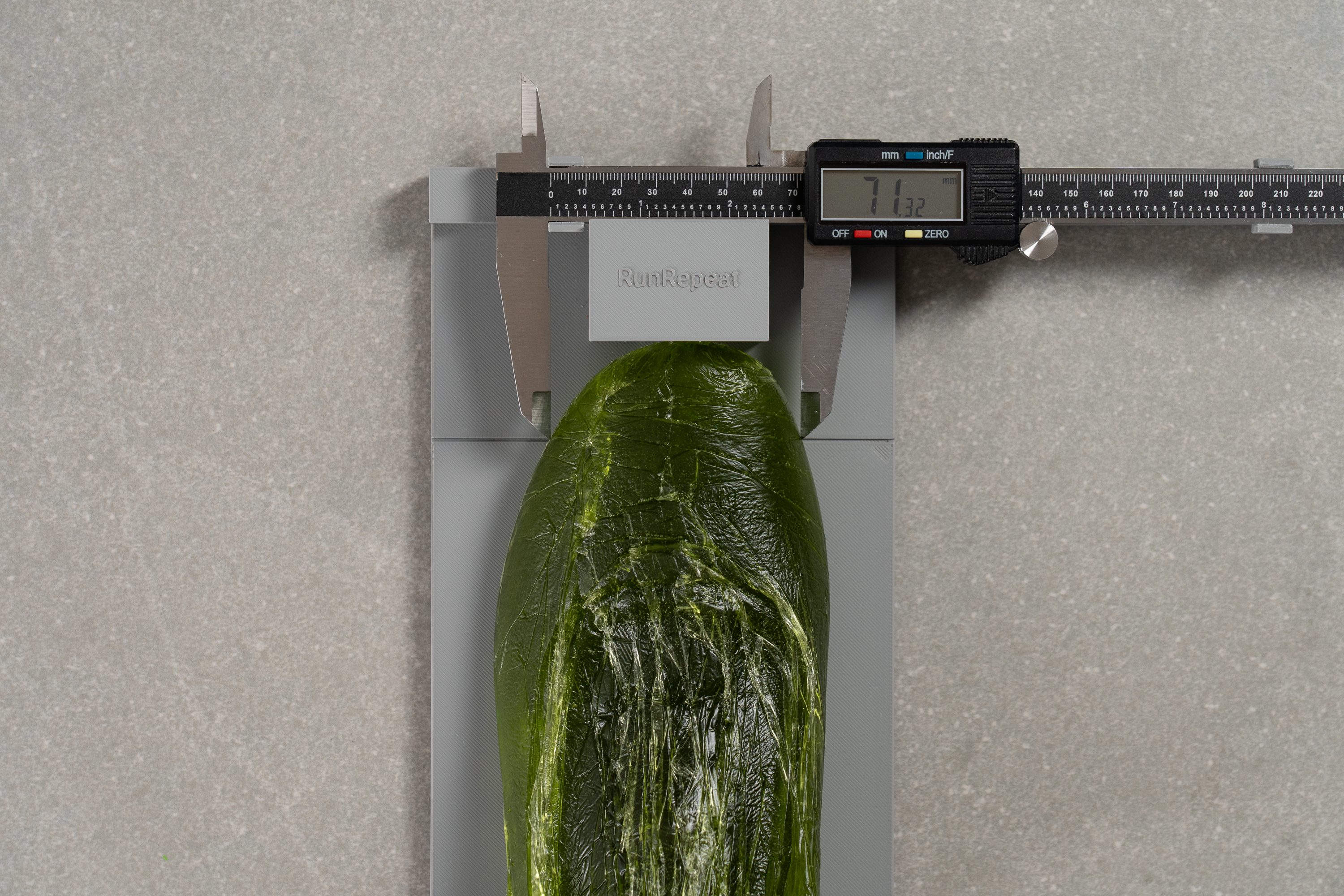
| Hypercourt Express 2 | 71.3 mm |
| Average | 69.2 mm |
Toebox height
The shoe's vertical space is pretty abundant as well with an above-average toebox height of 26.4 mm.
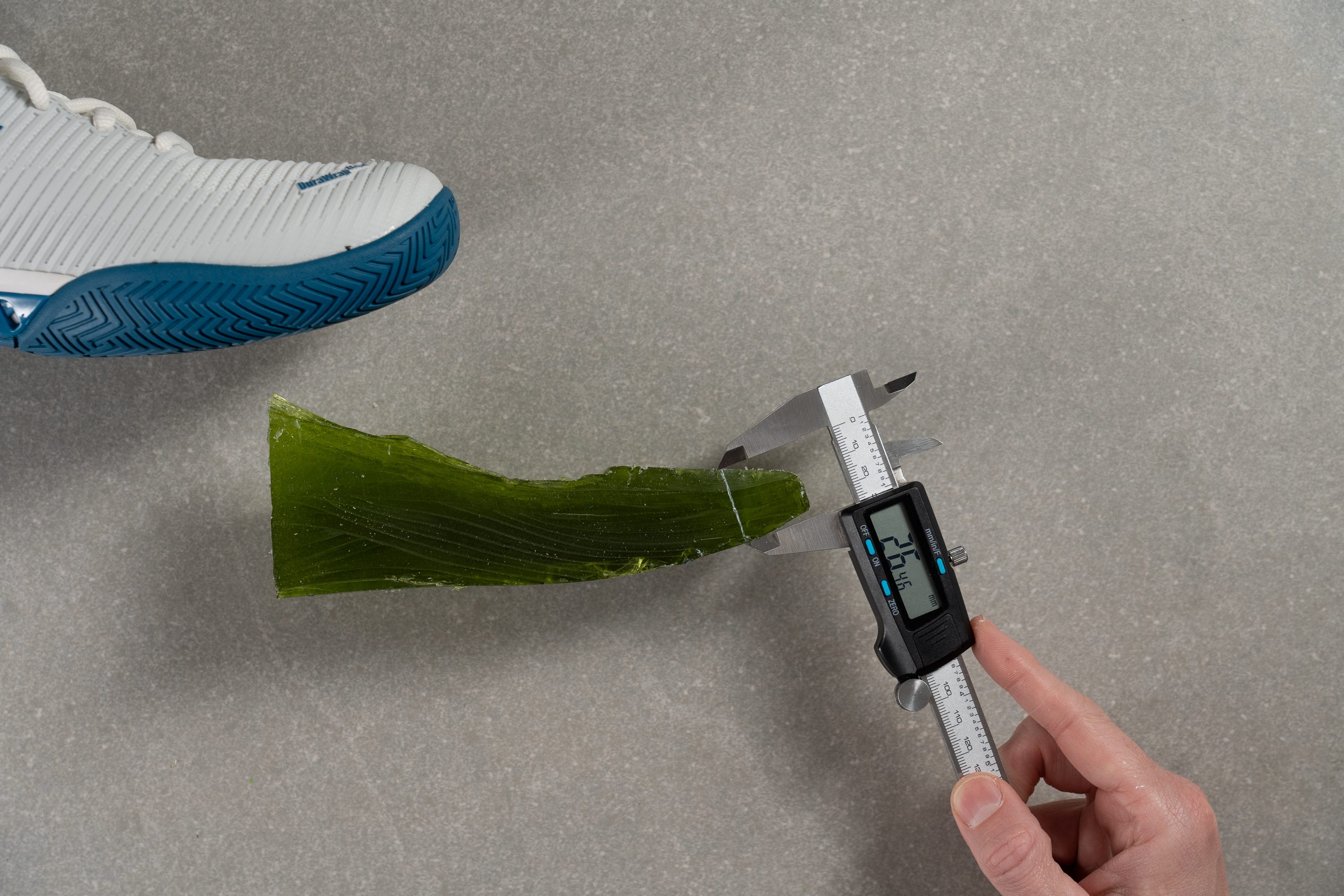
| Hypercourt Express 2 | 26.4 mm |
| Average | 25.1 mm |
Traction / Grip
The shoe's semi-herringbone pattern and rubber type offered us a wonderful tandem of grip and give.
We felt confident enough to sprint forward, stop on a sixpence, and then slide out of a shot. Every move and step felt surefooted.
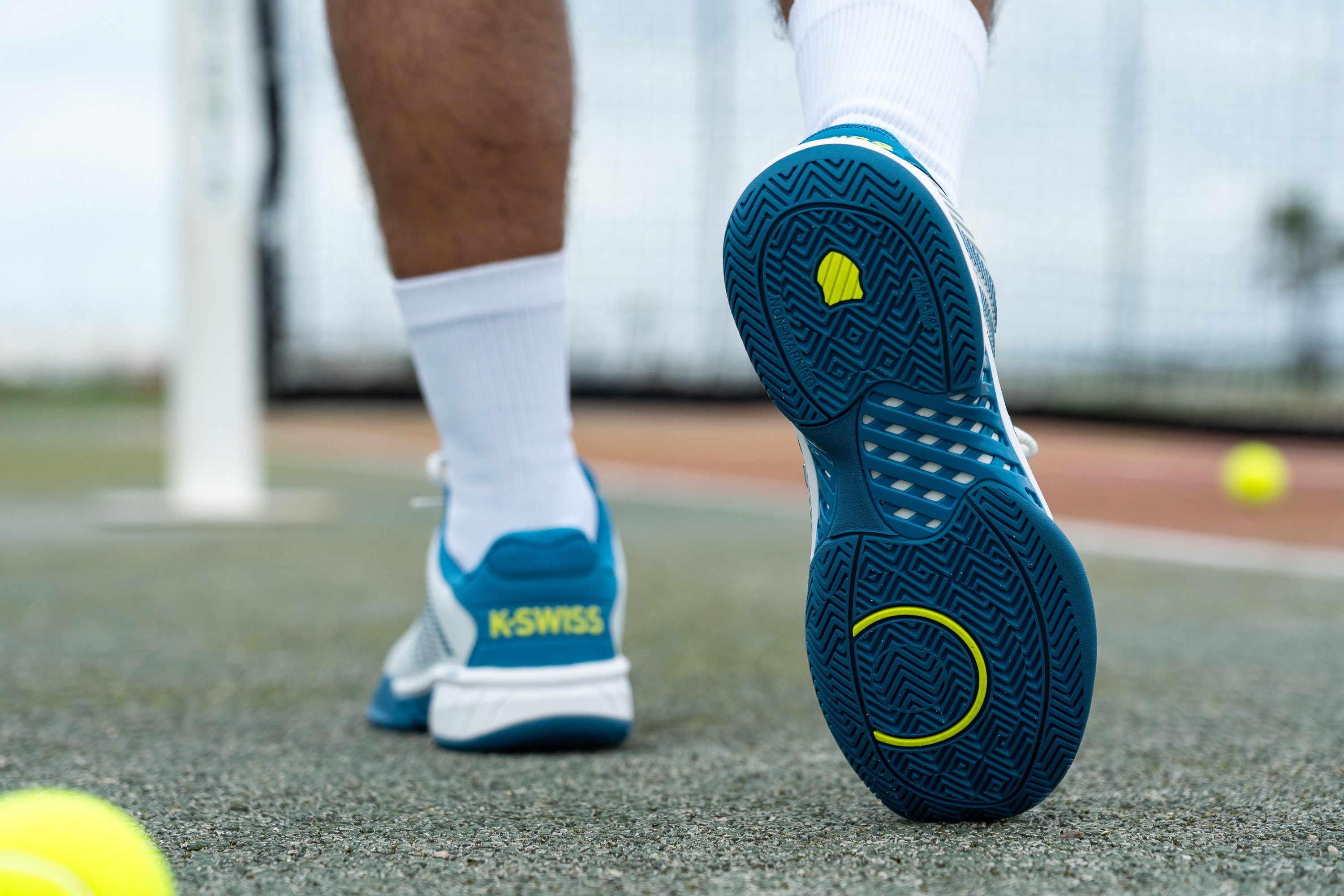
Forefoot traction
With a solid friction coefficient of 0.81, the K-Swiss Hypercourt Express 2 kept us confident when sprinting forward, stopping on a sixpence, and sliding out of a shot. Every move and step felt surefooted.
| Hypercourt Express 2 | 0.81 |
| Average | 0.76 |
Outsole design
The Hypercourt features a modified herringbone pattern and a thin pivot point in the ball of the foot area. It also opts for zonal rubber coverage to provide grip where it's most needed while keeping the shoe light, flexible, and manoeuvrable.

Flexibility / Stiffness
The stiffness of this K-Swiss shoe kept us on our toes through the entire playtest!
To check exactly how the Hypercourt Express 2 fares against other tennis shoes in this regard, we measured its rigidity with the help of a force gauge. Fixing the shoe to the table, we bent it to a 30-degree angle and measured how much force it took to do that.
Requiring 20.3N, it is significantly stiffer than the average tennis shoe. Bending the foot is going to feel less natural but you're going to benefit from the propulsion.
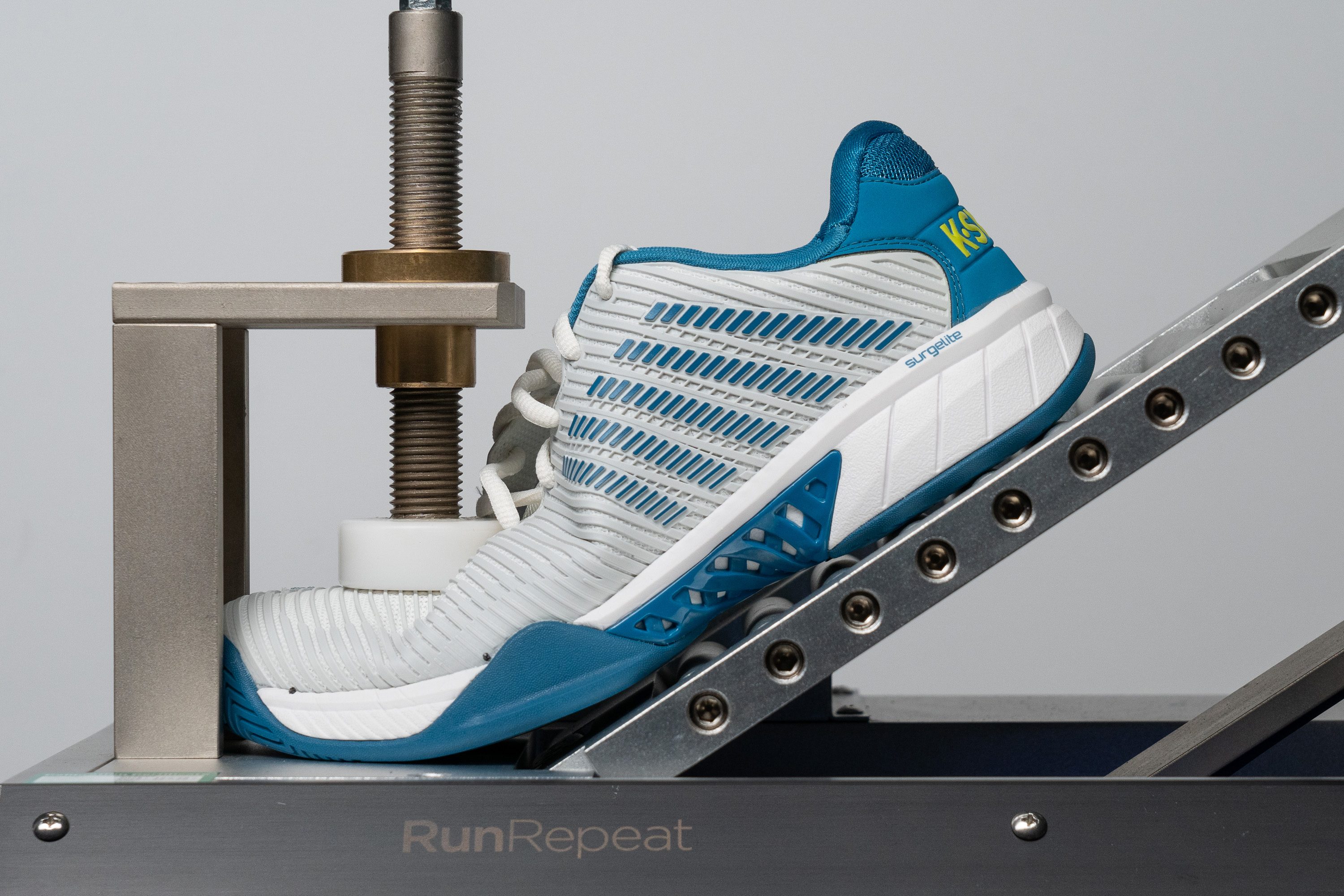
| Hypercourt Express 2 | 20.3N |
| Average | 16.6N |
Weight
Our playtest went easily and effortlessly thanks to the reasonable weight of the Hypercourt Express 2.
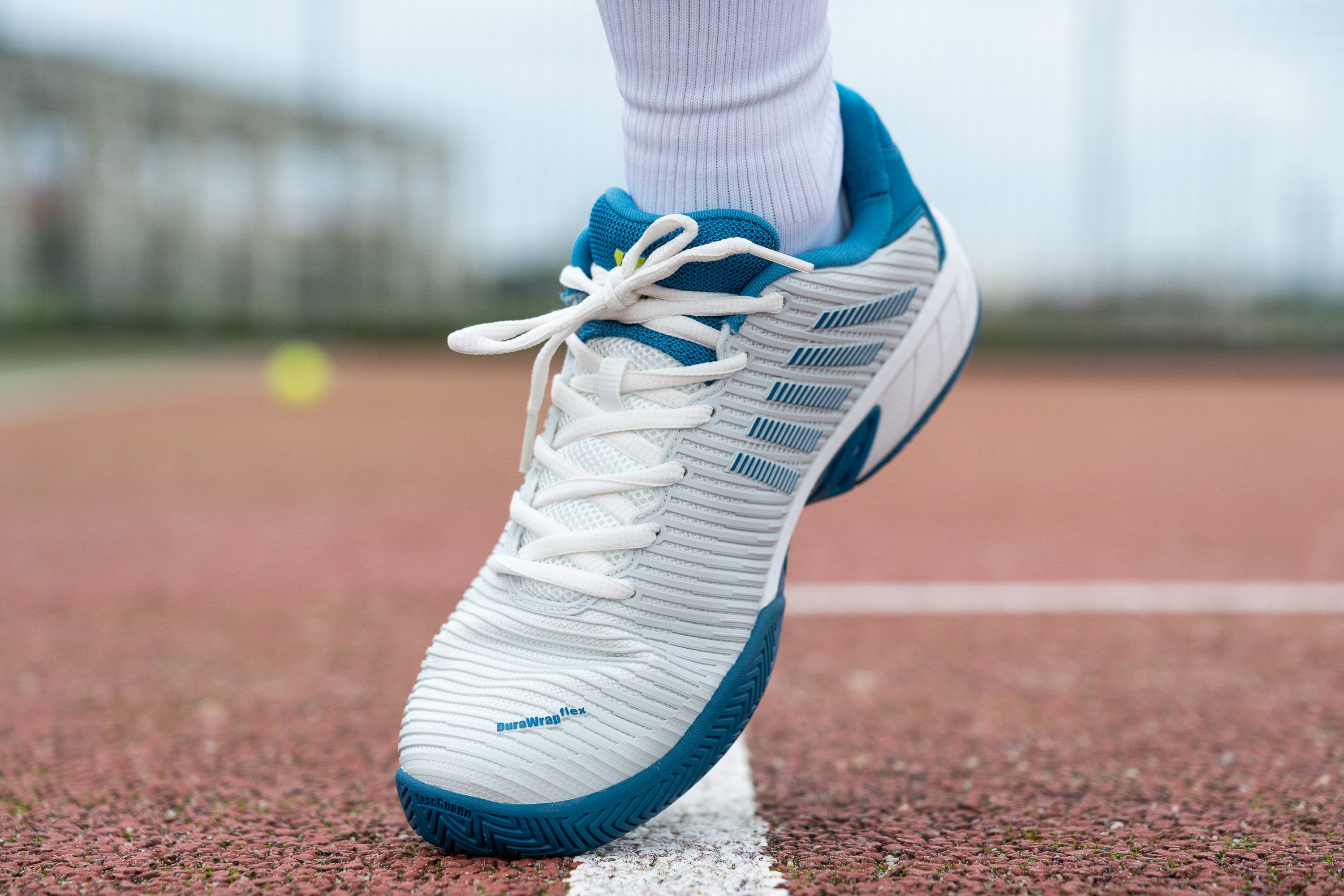
Putting it on a scale, we got 12.3 oz (349g) in a men's US size 9. We are happy to report that it's lighter than average and the shoe's streamlined and simple design makes it feel even lighter.

| Hypercourt Express 2 | 12.3 oz (349g) |
| Average | 12.8 oz (362g) |
Breathability
Playtesting the Hypercourt Express 2 in warm weather, we were glad the temperature wasn't so hot that day. Despite having a mesh upper, this K-Swiss shoe didn't feel so well-aerated on our feet.
To make sure that our perception didn't mislead us, we also ran our in-house breathability test.
As the smoke began to fill up the shoe's upper, we could see how low its ventilation capacity actually was! Compared to the ASICS Solution Speed FF 2, the Hypercourt barely lets any heat escape. Thus, on a 1-5 scale, where 5 is the most breathable, we gave this K-Swiss shoe a lower score of 3.
We wouldn't call it a stuffy shoe either as it didn't leave our feet that sweaty. You can see that it's got a semi-transparent upper material in our light test below.
We also checked the texture up close through our microscope to get an even better idea.
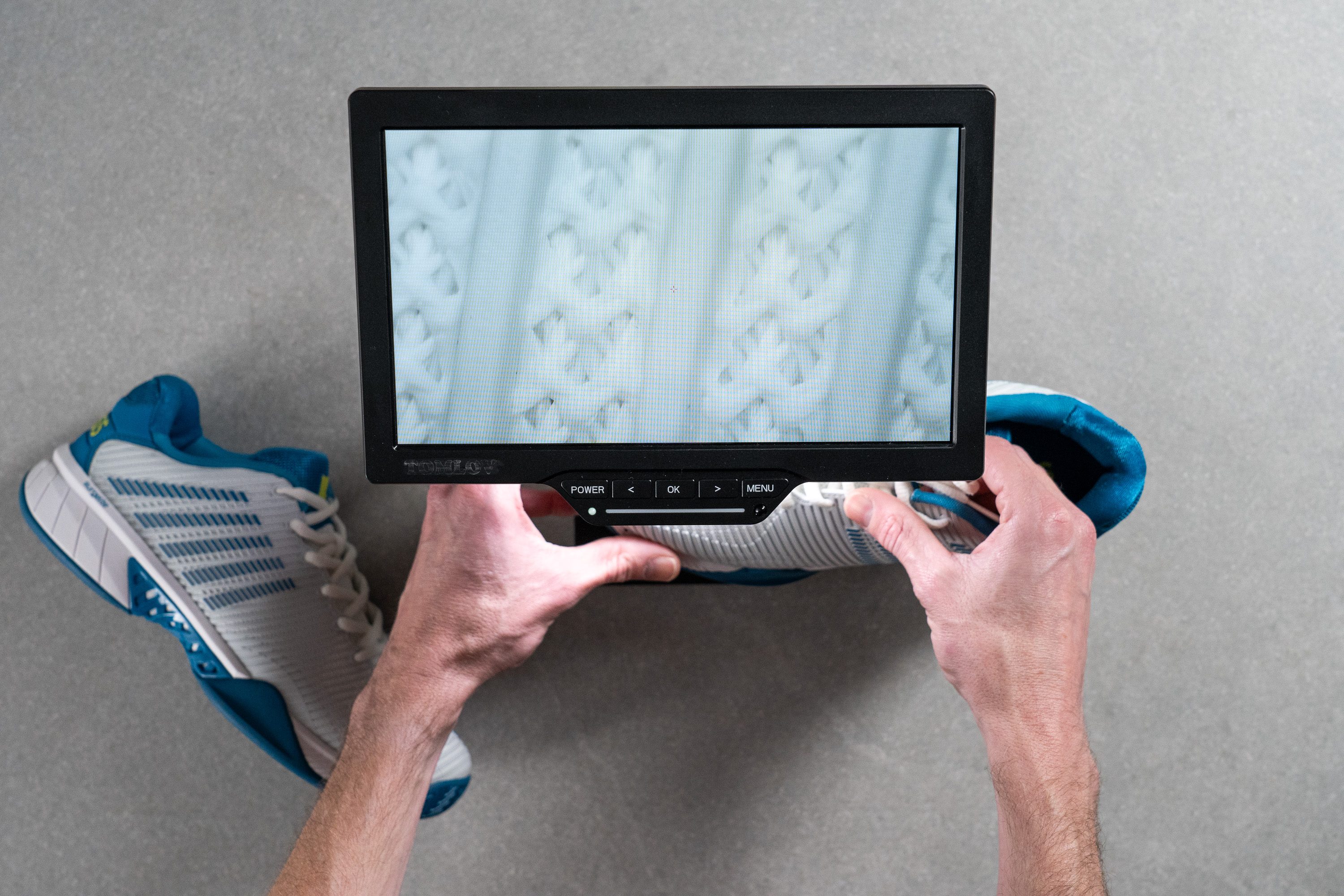
The mesh chainlinks can be seen in between the protective Durawrap overlays. But they are so tightly woven that it is no surprise that the K-Swiss Hypercourt Express 2 falls short in the breathability department.
| Hypercourt Express 2 | 3 |
| Average | 3.2 |
Stability
Lateral stability test
Considering the lighter weight and overall nimble design of the K-Swiss Hypercourt Express 2, its stability level is quite impressive. It is more forgiving than shoes like the ASICS Resolution 9 and the Adidas Barricade 13 but offers just enough support for a serve-and-volley type of player.
Torsional rigidity
A stiff shank embraces the shoe's midfoot quite firmly, making it nearly impossible to twist the Hypercourt. In our manual test, we rated its torsional rigidity almost as high as we would a stability tennis shoe. On a 1-5 scale, where 5 is the stiffest we gave it a high score of 4.
| Hypercourt Express 2 | 4 |
| Average | 4.4 |
Heel counter stiffness
Where the Hypercourt Express 2 gets more pliable than most tennis shoes is the heel counter. Giving it a push-and-squeeze in our manual test, we assessed its stiffness as only 3 out of 5.
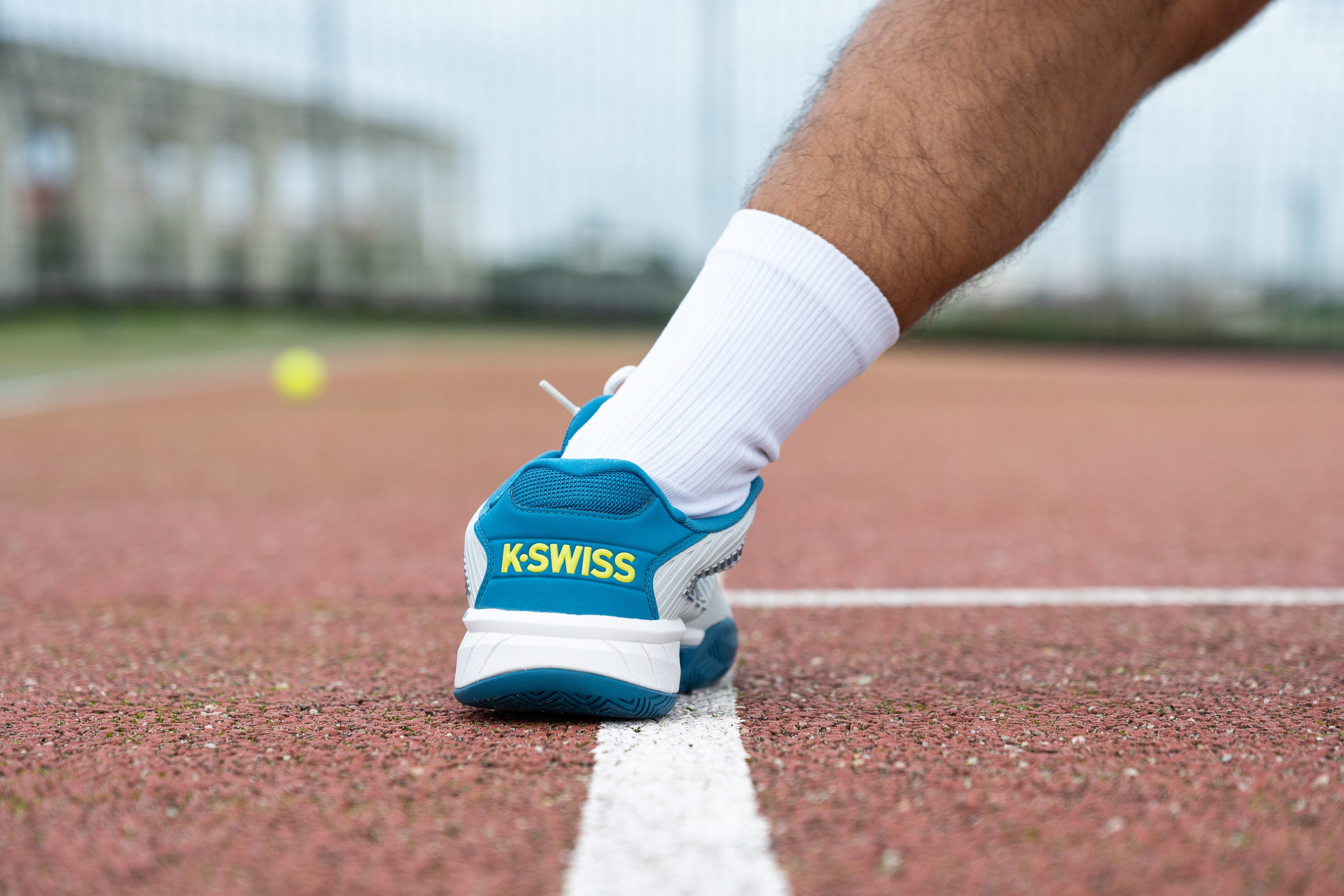
We didn't face any glaring issues with the heel hold in this shoe but we wouldn't recommend it to players who have overpronation or are used to feeling extra support around the ankle.
| Hypercourt Express 2 | 3 |
| Average | 4.1 |
Midsole width - forefoot
On a lighter note, we are quite happy with the platform width of this K-Swiss shoe. It is an essential part of every tennis shoe's stability.
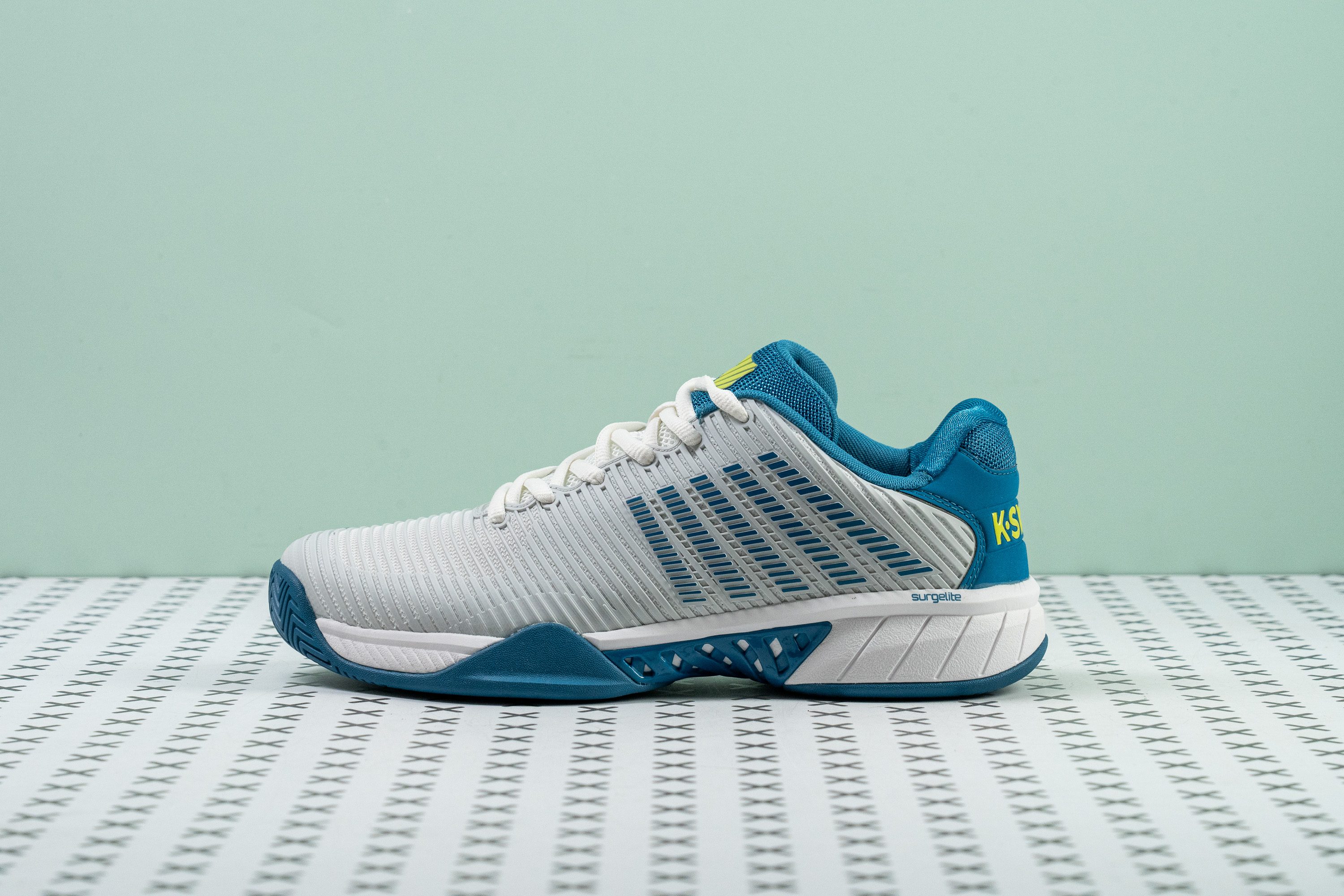
Measuring the distance between the widest points of the forefoot, our calliper showed 116.4 mm. This is tangibly wider than average and is even wider than some stability shoes! For example, the Adidas Barricade 13 is a few millimetres narrower at 112 mm.
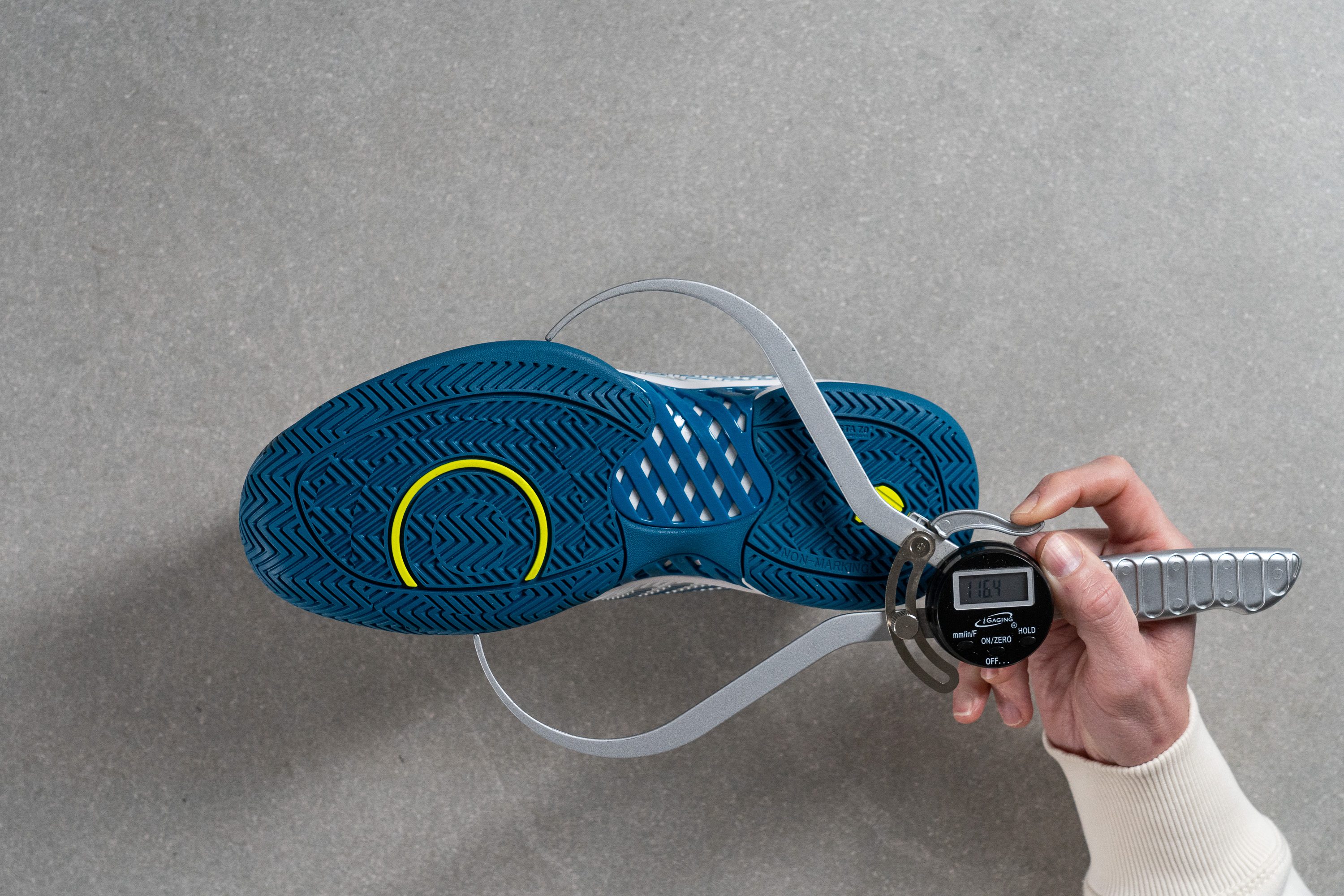
| Hypercourt Express 2 | 116.4 mm |
| Average | 111.9 mm |
Midsole width - heel
The Hypercourt Express 2 also boasts a nice and wide heel area. It is not much wider than the average but is more than enough at 91.0 mm.
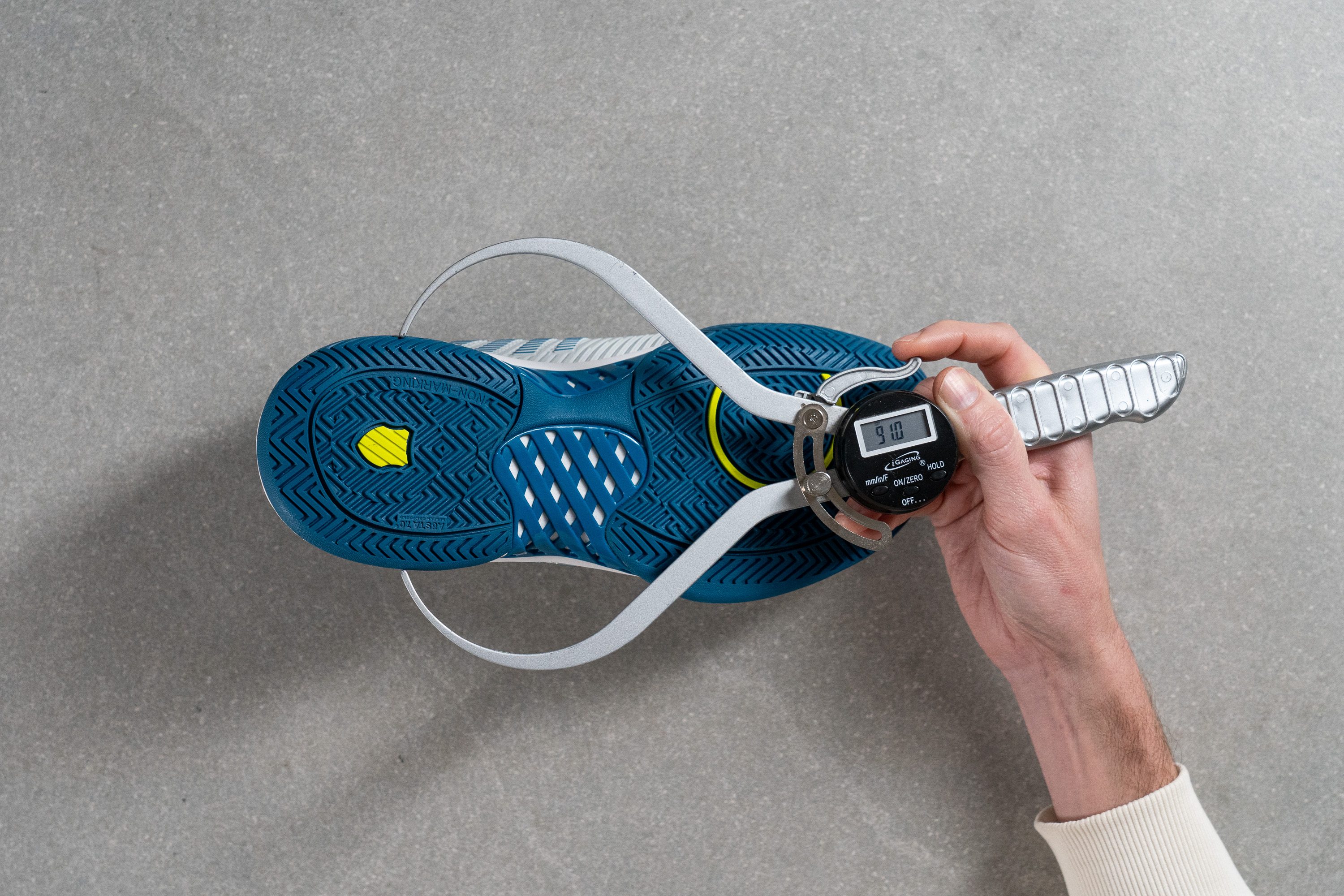
| Hypercourt Express 2 | 91.0 mm |
| Average | 89.6 mm |
Durability
Toebox durability
The Hypercourt Express 2 may not look aggressive but it's a devil in disguise. K-Swiss went for a protection feature called the DuraWrap Flex which lines the upper with sturdy rubbery overlays for durability but still lets the shoe be flexible.
Sliding around the court is no joke for tennis shoes, so we equipped ourselves with a Dremel to test the Hypercourt's capacity to withstand abrasion. Drilling it for 12 seconds at a speed of 5K RPM, we were extremely pleasantly surprised.
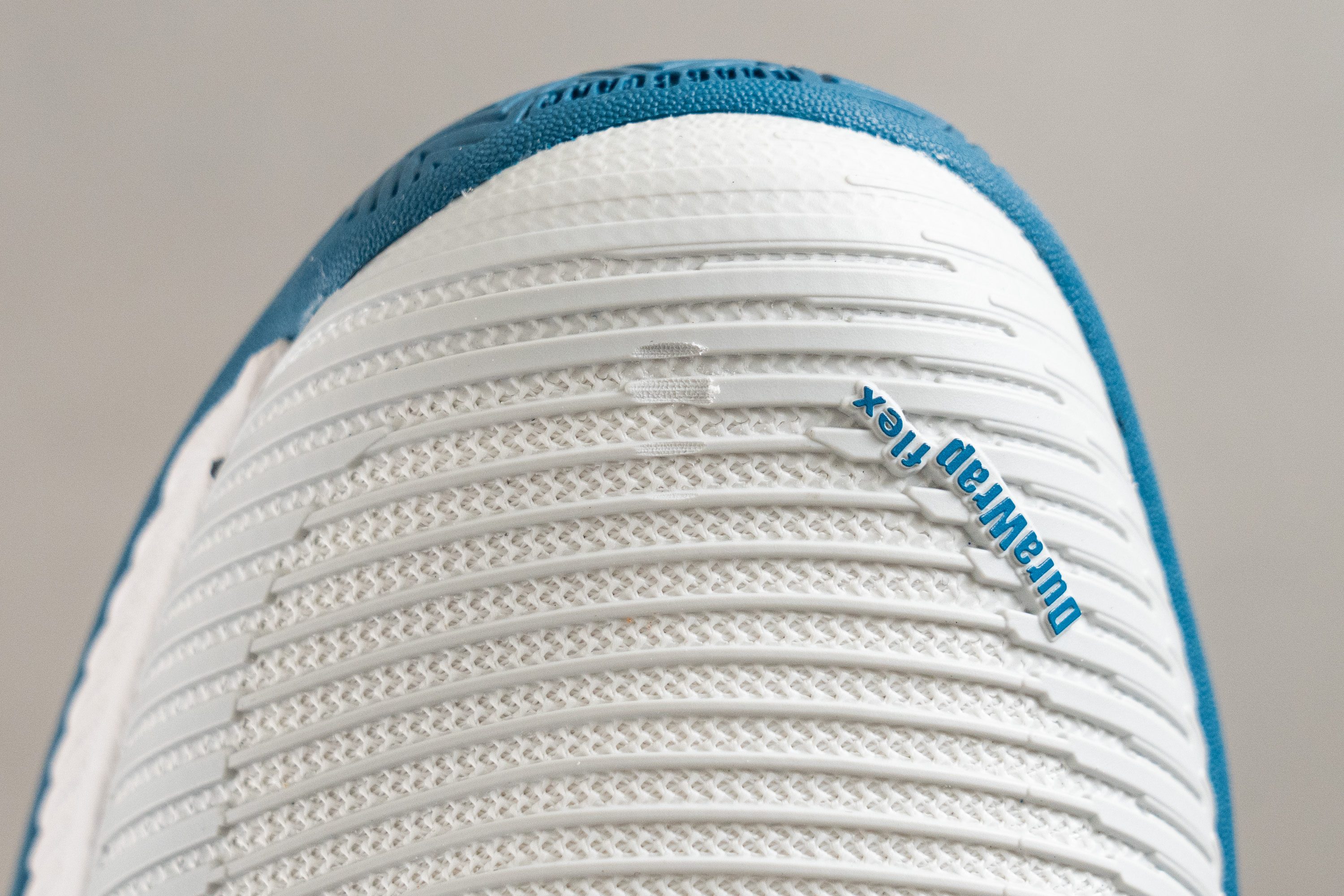
The DuraWrap didn't let the sandpaper tip get all the way through to the mesh so we readily gave the shoe's toebox durability a maximum score of 5 out of 5.
It was also very smart of K-Swiss to raise the rubber outsole on the medial side for added toe drag protection.
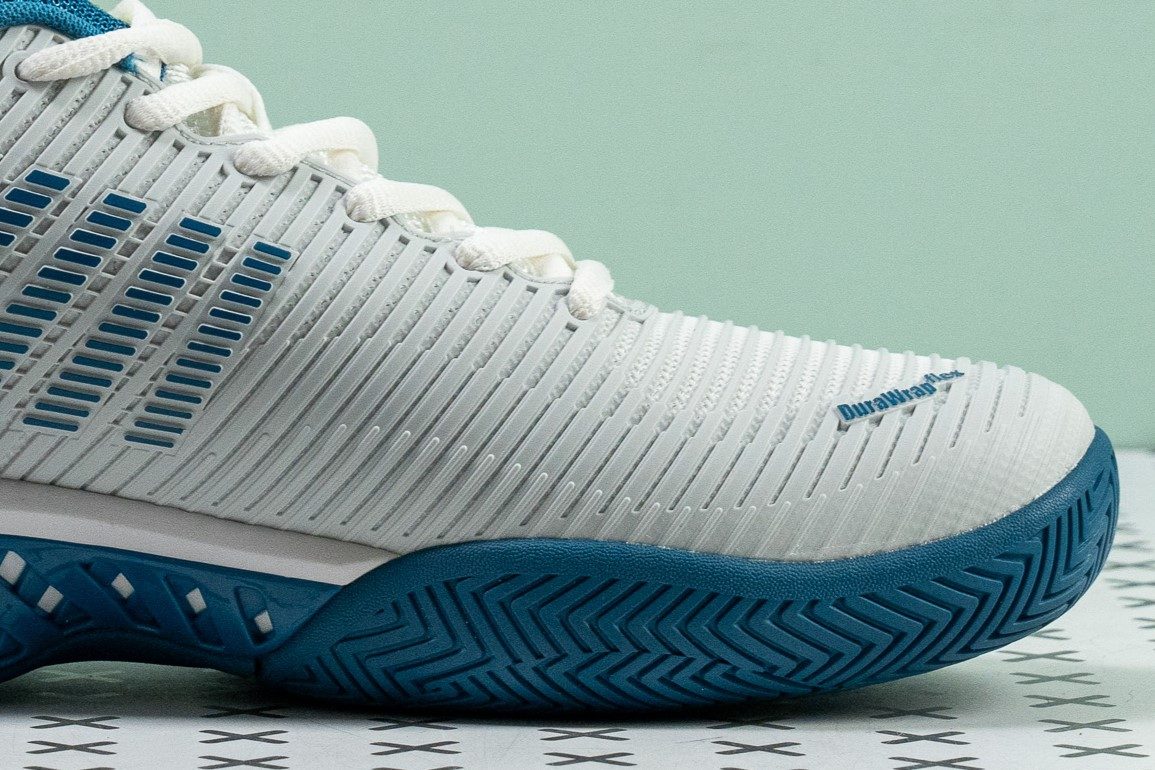
| Hypercourt Express 2 | 5 |
| Average | 3.7 |
Heel padding durability
We couldn't help but notice that the brand paid just as much attention to the interior of the shoe as it did to the exterior. Applying the Dremel to the inner side of the heel collar for 4 seconds at a 5K RPM speed, all we got was a minor scuff.
Being almost untouchable, the Hypercourt Express 2 received a solid 4 out of 5 for heel padding durability from our end.
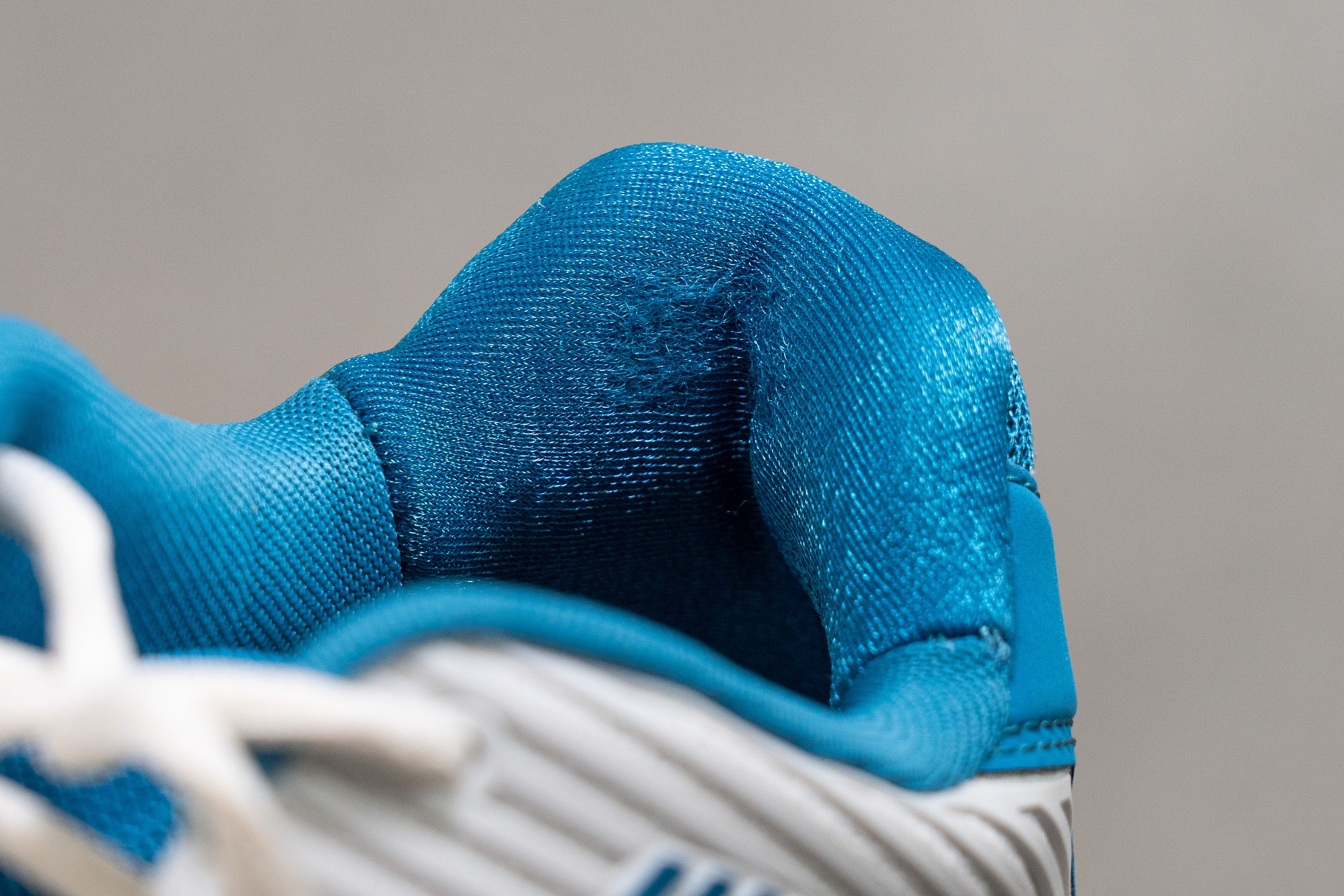
| Hypercourt Express 2 | 4 |
| Average | 3.3 |
Outsole hardness
Featuring a proprietary Aosta 7.0 rubber, the outsole of this K-Swiss shoe is a very firm compound. We pressed a durometer against it and got a reading of 91.0 HC which is among the hardest in our lab by far.
Harder rubbers are not only perfect for sliding but also prove to be more lasting than softer ones.
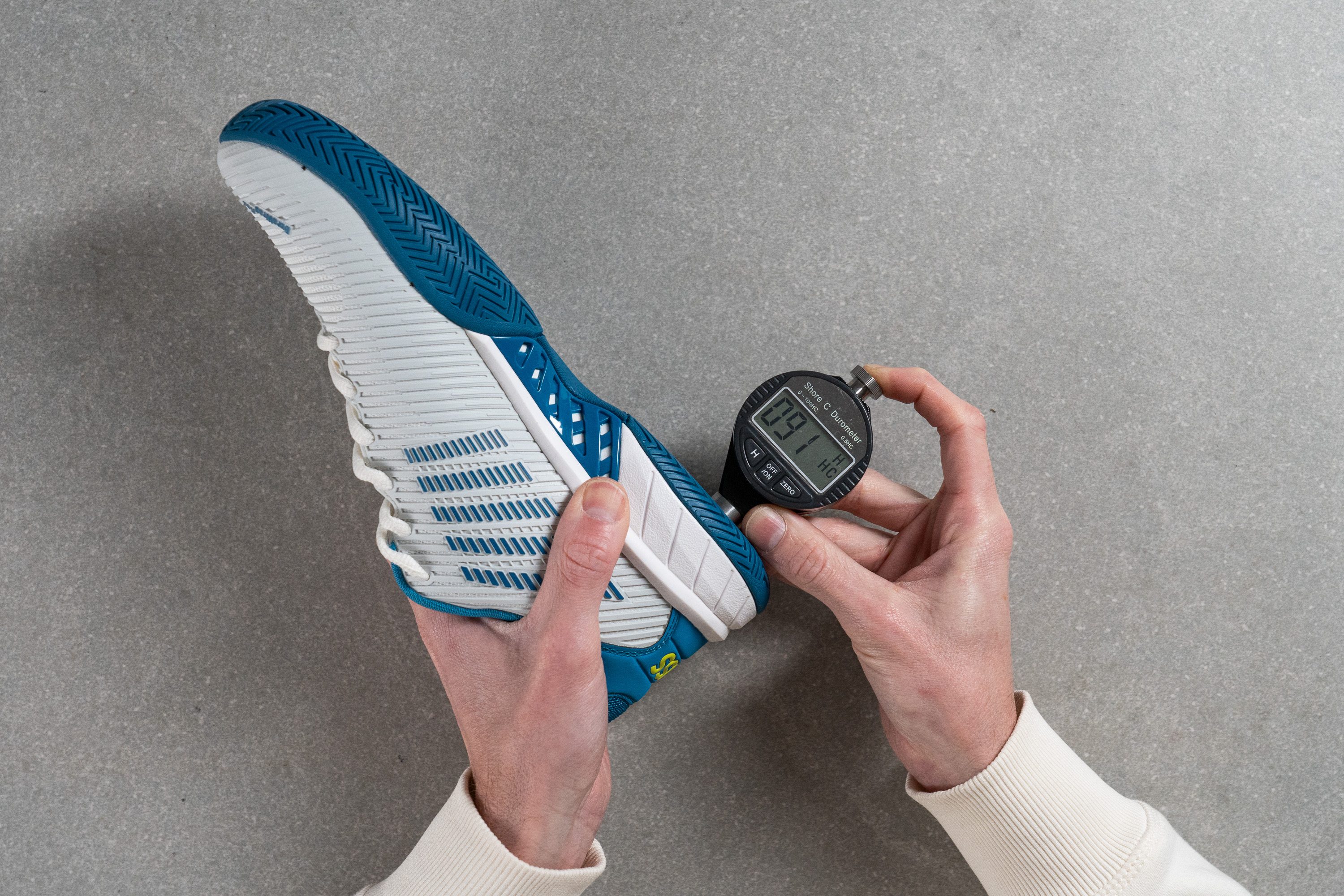
| Hypercourt Express 2 | 91.0 HC |
| Average | 86.0 HC |
Outsole durability
We grabbed our trusted Dremel again to go really hard on the outsole of the Hypercourt Express 2. This time, we amped up the speed to 10K RPM and drilled for a longer period of 22 seconds.
Just as we expected, the tool's tip failed to give even a millimetre of damage to the rubber! Our tread gauge showed a pretty shallow 0.7 mm dent.
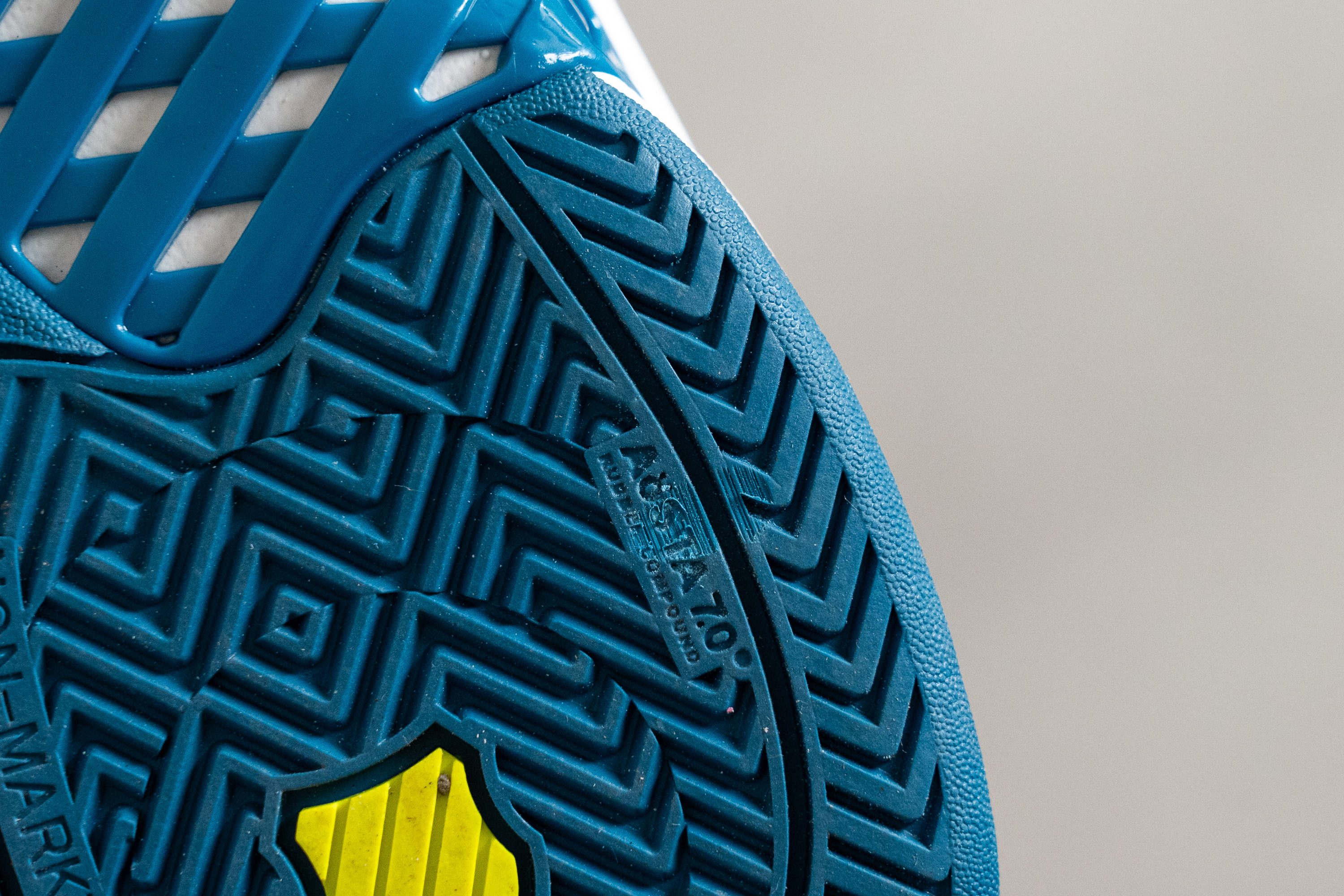
| Hypercourt Express 2 | 0.7 mm |
| Average | 0.8 mm |
Outsole thickness
The third component of outsole durability is, of course, its thickness. Using a calliper, we measured it at 4.0 mm. This is a solid standard amount of rubber for a hard-court shoe.
The only downside is that the K-Swiss Hypercourt Express 2 doesn't come with an outsole warranty. But given the price, we believe it's fair.
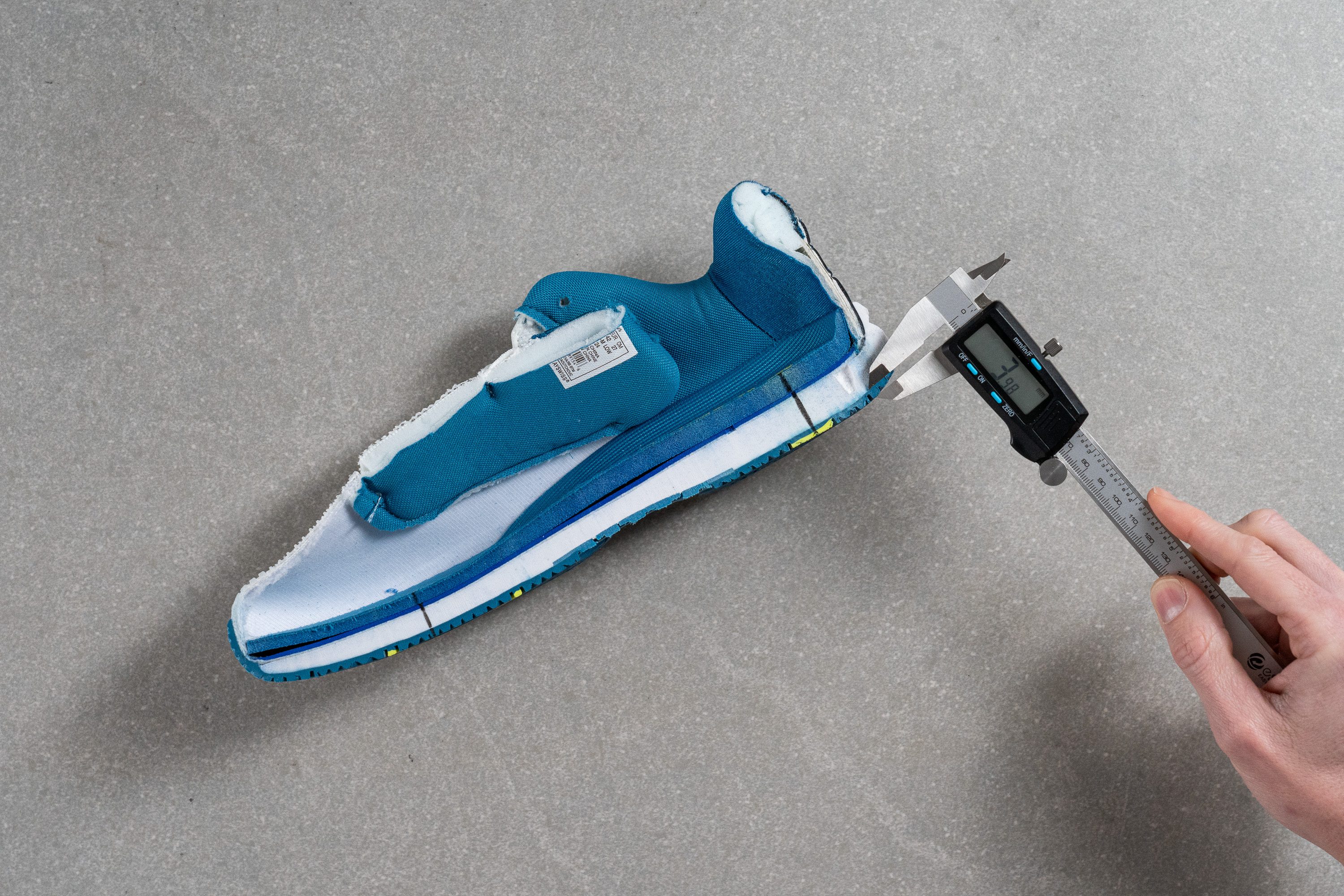
| Hypercourt Express 2 | 4.0 mm |
| Average | 4.2 mm |
Misc
Insole thickness
Like its soft midsole wasn't enough, K-Swiss also threw a very thick, generously padded insole into the Hypercourt Express 2. Measuring it with our calliper returned 8.5 mm which is notably thicker than the average.
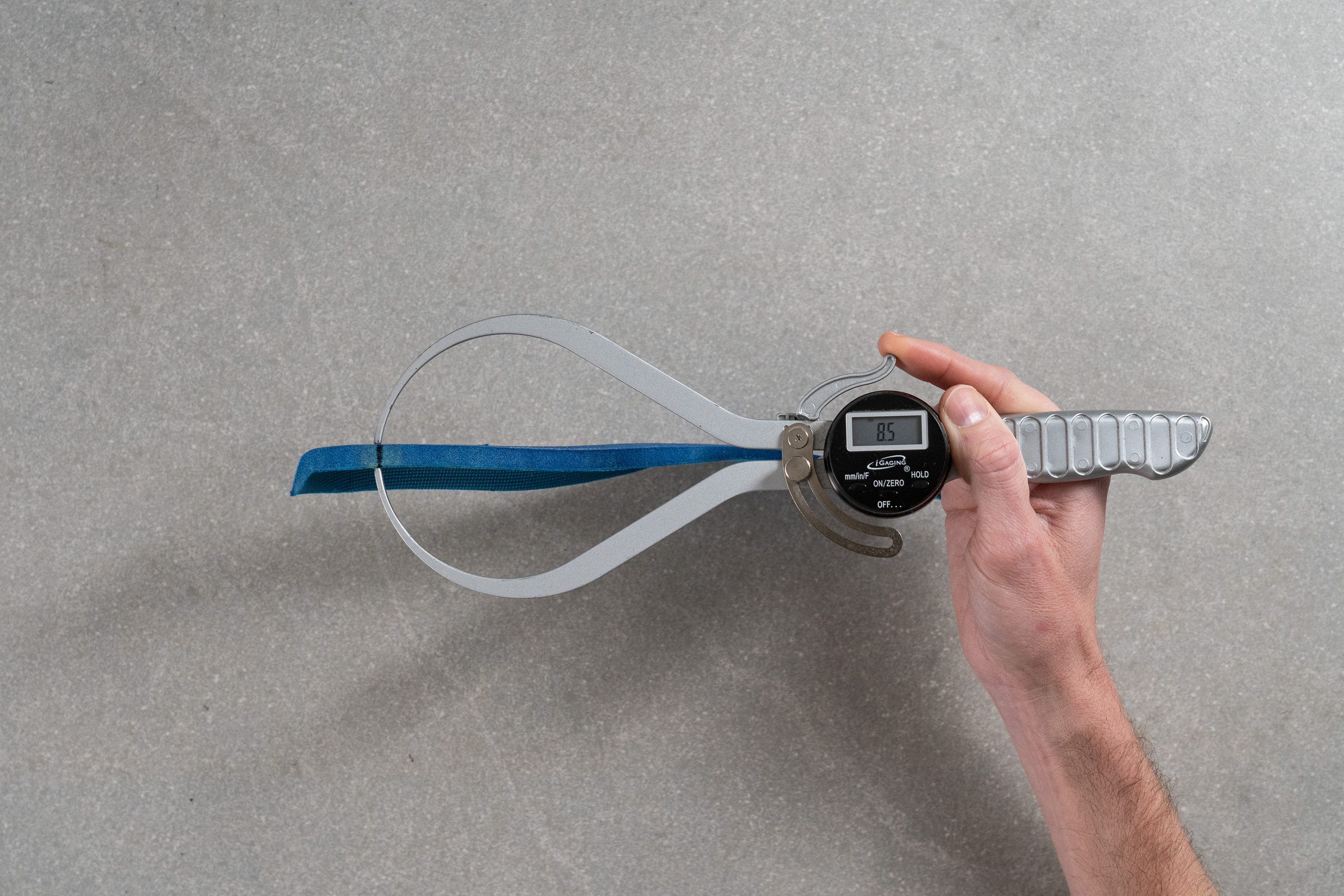
| Hypercourt Express 2 | 8.5 mm |
| Average | 5.1 mm |
Removable insole
The shoe's stock insole is easy to remove in case you want to swap it for an orthotic. But keep in mind that the shoe has a thicker-than-average insole and a roomier-than-average fit, so the replacement shouldn't be too thin.
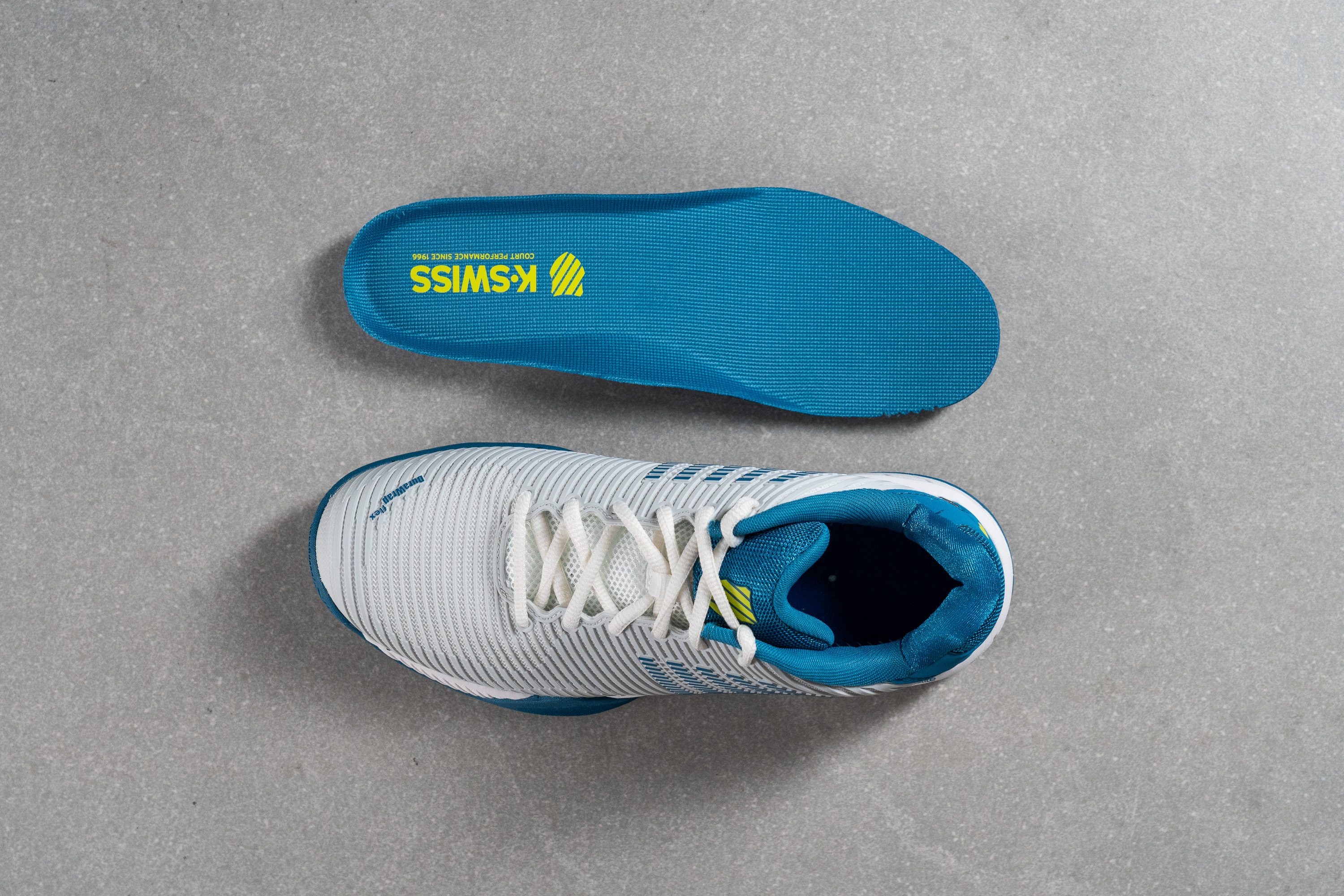
| Hypercourt Express 2 | Yes |
Tongue padding
This K-Swiss tennis shoe is all about comfort! We fell in love with its supple confines the moment we got our foot in.
The padding is VERY generous in both the collar and the tongue. Measuring the tongue thickness with a calliper, we got 10.0 mm which is puffier than the average.
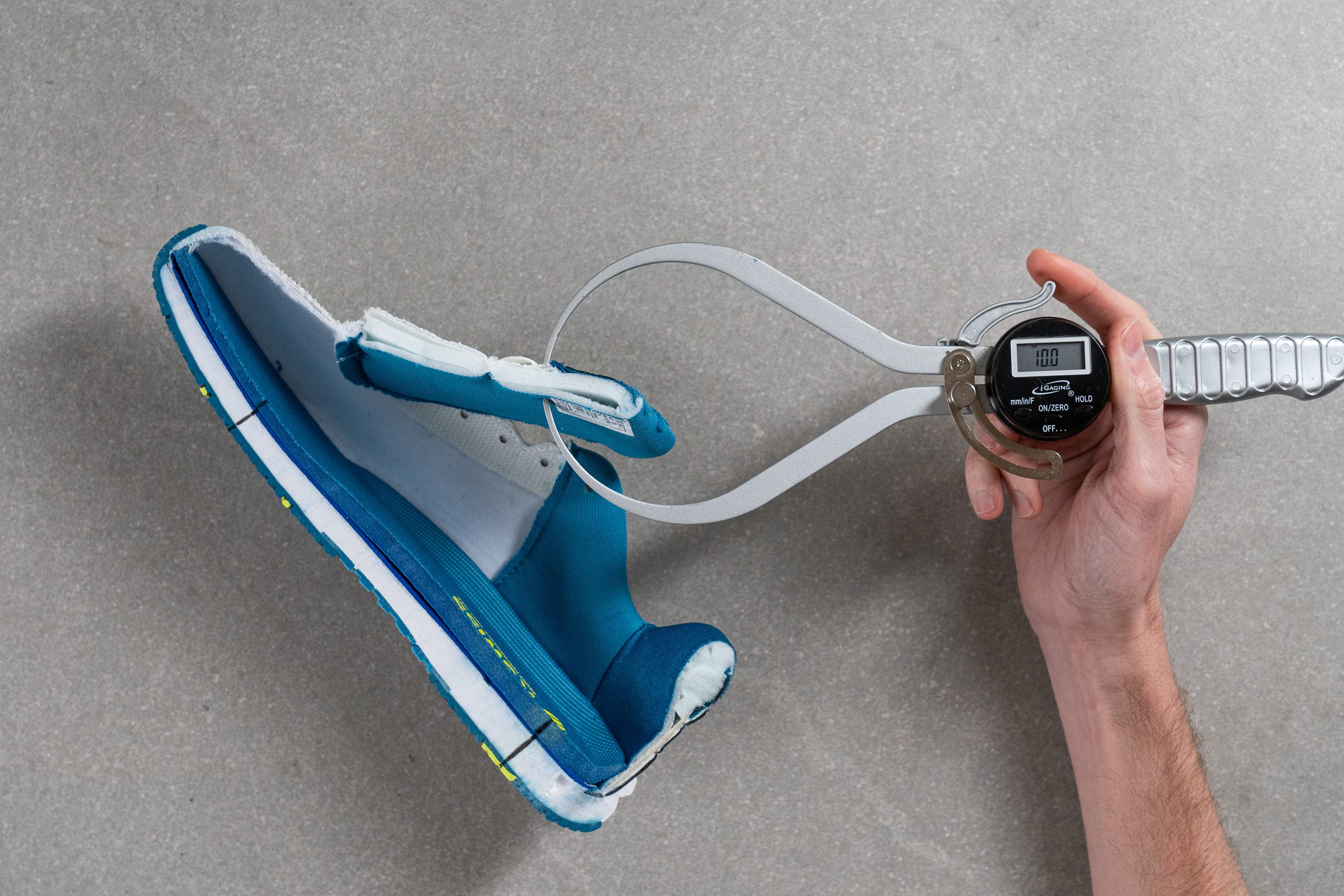
| Hypercourt Express 2 | 10.0 mm |
| Average | 8.1 mm |
Tongue: gusset type
The tongue on this shoe is non-gusseted, meaning there are no attachments to the upper on the sides. Having experienced that feature in many other tennis shoes, it has long become a must for us rather than just a welcome touch.
But even though the lack of it wasn't a disaster in the Hypercourt Express 2, a slight shifting of the tongue on forceful movements made us wish it was there.

| Hypercourt Express 2 | None |
Heel tab
There are no pull tabs or finger loops to hold on to in the Hypercourt Express 2. But slipping into it is easy given the non-gusseted tongue that grants a very wide shoe opening.

| Hypercourt Express 2 | None |



















































